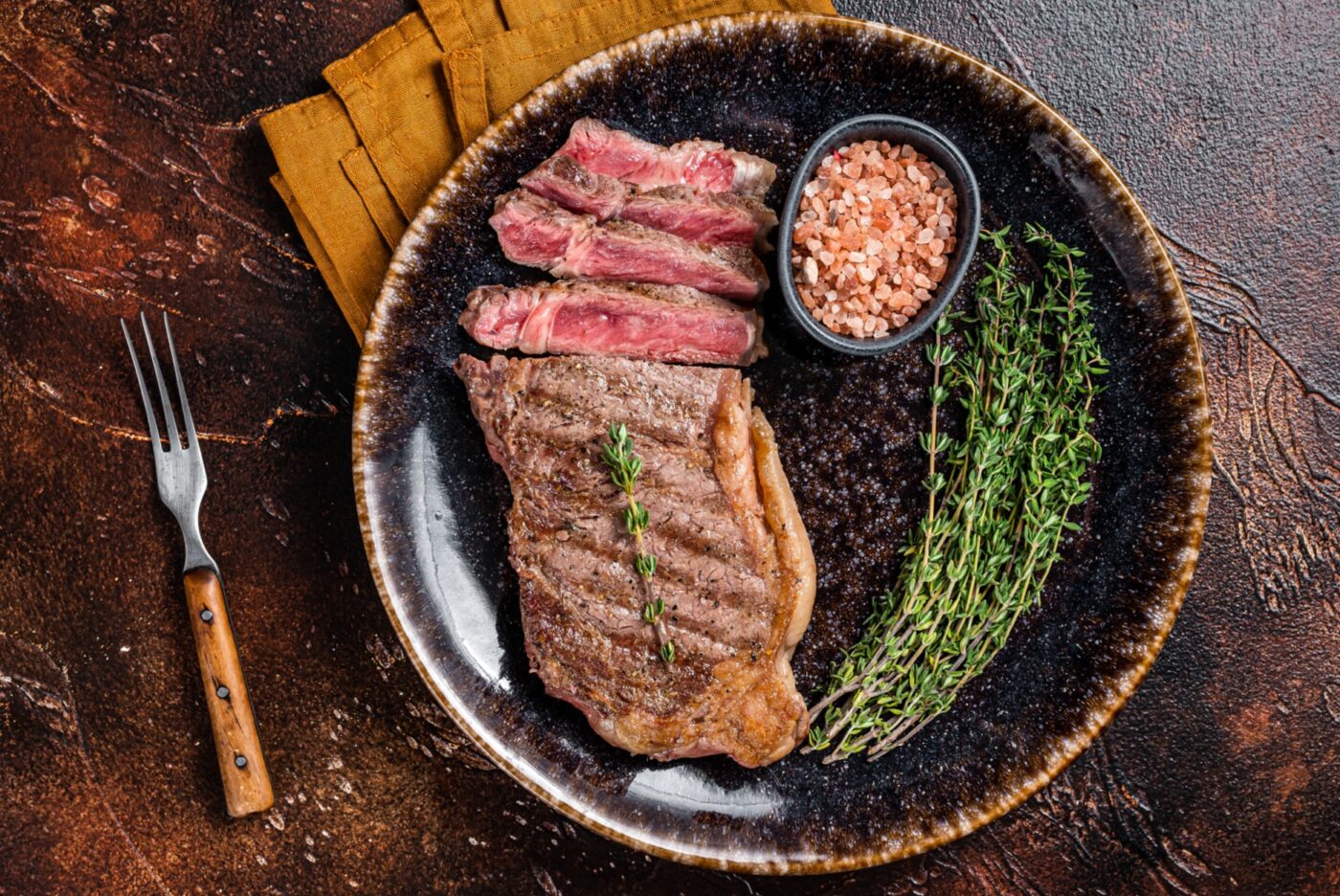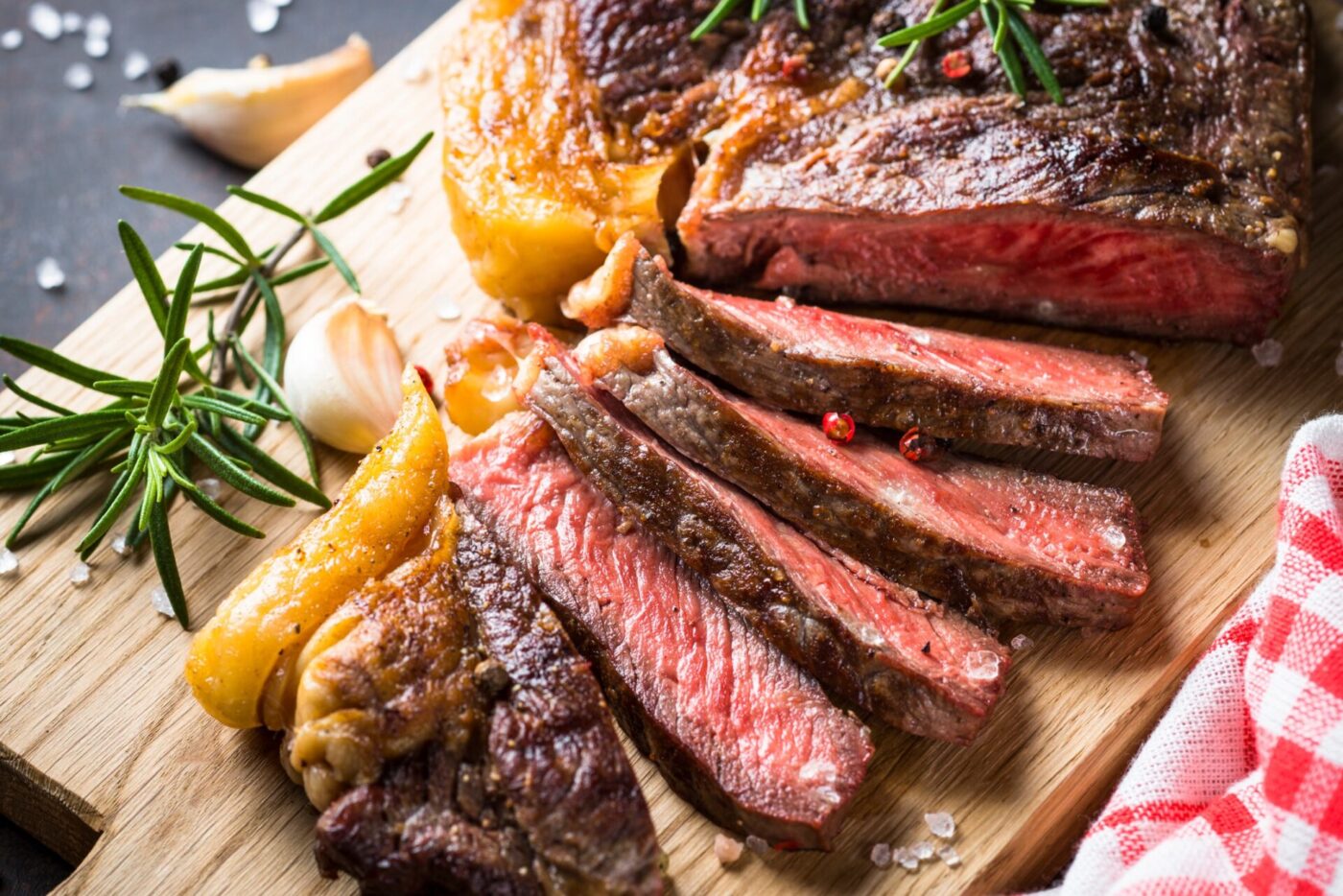Read More: Nutritional Information on Types of Beef Steaks
The Big Picture: Common Ground & Key Differences
Before we delve into specific cuts, let’s establish some common ground. All beef steaks are:
- Excellent sources of protein: Essential for building and repairing tissues, producing enzymes and hormones, and supporting a healthy immune system.
- Rich in Iron: Specifically heme iron, which is more readily absorbed by the body than non-heme iron found in plant-based sources. Iron is crucial for oxygen transport in the blood.
- Good sources of Zinc: Important for immune function, wound healing, and cell growth.
- Contain B Vitamins: Including B12, niacin, and riboflavin, which are vital for energy production, nerve function, and healthy skin.
- Naturally low in Carbohydrates: Steaks themselves contain negligible carbohydrates.
The primary nutritional differences between steak cuts stem from their fat content and composition. The amount and type of fat (saturated, monounsaturated, and polyunsaturated) significantly impact the calorie count and can influence heart health. Leaner cuts have less fat and fewer calories, while fattier cuts provide more energy but also a higher proportion of saturated fat.
Let’s Break Down the Steaks
Here’s a nutritional comparison of some popular beef steak cuts, focusing on key nutrients per 3.5-ounce (100-gram) cooked serving:
(Note: These values are approximate and can vary based on specific sourcing, trimming, and cooking methods. Always refer to specific product labels for the most accurate information.)
Filet Mignon (Tenderloin Steak): The Lean King
- Calories: ~179
- Protein: ~28g
- Total Fat: ~7g
- Saturated Fat: ~3g
- Iron: ~2.5mg ( ~14% Daily Value)
- Zinc: ~5mg (~45% Daily Value)
The Story: Filet Mignon is renowned for its exceptional tenderness. It comes from the tenderloin, a muscle that does very little work, resulting in minimal connective tissue. It’s also one of the leanest cuts of beef. This makes it a good choice for those watching their calorie and saturated fat intake. It’s still packed with protein and essential nutrients.
Sirloin Steak: The Versatile Value
- Calories: ~180-220 (depending on specific cut – Top Sirloin is leaner than Bottom Sirloin)
- Protein: ~26-30g
- Total Fat: ~8-12g
- Saturated Fat: ~3-5g
- Iron: ~2-3mg ( ~11-17% Daily Value)
- Zinc: ~4-6mg (~36-55% Daily Value)
The Story: Sirloin steaks offer a good balance of flavor, tenderness, and affordability. They come from the sirloin primal, located towards the rear of the animal. “Top Sirloin” is generally leaner and more tender than “Bottom Sirloin.” Sirloin steaks are versatile and can be grilled, pan-fried, or broiled. They represent a good compromise between leanness and flavor.
Ribeye Steak (Delmonico Steak): The Marbled Marvel
- Calories: ~270-300
- Protein: ~24-27g
- Total Fat: ~18-23g
- Saturated Fat: ~8-10g
- Iron: ~2mg (~11% Daily Value)
- Zinc: ~4mg (~36% Daily Value)
The Story: Ribeye is known for its rich, buttery flavor and generous marbling (intramuscular fat). This marbling contributes to its tenderness and juiciness. However, it also significantly increases the fat and calorie content, particularly saturated fat. Ribeye is a delicious indulgence, but best enjoyed in moderation as part of a balanced diet. The extra fat does contain some beneficial monounsaturated fats.
New York Strip Steak (Strip Loin Steak): The Flavorful Strip
- Calories: ~210-240
- Protein: ~25-28g
- Total Fat: ~11-15g
- Saturated Fat: ~4-6g
- Iron: ~2mg (~11% Daily Value)
- Zinc: ~4.5mg (~41% Daily Value)
The Story: The New York Strip is cut from the short loin, another relatively tender muscle. It has a good balance of flavor and tenderness, with less marbling than a Ribeye but more than a Filet Mignon. It’s a popular choice for grilling and pan-searing. It’s often considered a good middle-ground option.
T-Bone Steak & Porterhouse Steak: The Two-in-One Treat
- Calories: ~230-280 (Porterhouse generally higher due to larger Filet portion)
- Protein: ~25-29g
- Total Fat: ~13-19g
- Saturated Fat: ~5-8g
- Iron: ~2-3mg (~11-17% Daily Value)
- Zinc: ~4-5mg (~36-45% Daily Value)
The Story: These steaks are essentially two steaks in one: a New York Strip and a portion of Filet Mignon, separated by a T-shaped bone. The Porterhouse is distinguished by having a larger portion of Filet Mignon. They offer a combination of flavors and textures, but the nutritional content reflects the average of the two cuts, leaning towards the higher fat content of the Strip side.
Flank Steak & Skirt Steak: The Lean & Flavorful Options (Often Marinated)
- Calories: ~170-200
- Protein: ~24-28g
- Total Fat: 7-11g
- Saturated Fat: 3-5g
- Iron: ~ 2.2
- Zinc: ~ 4.8
The Story: Flank and Skirt steaks are both lean cuts that come from the abdominal muscles of the cow. They have a strong, beefy flavor but can be tougher than other cuts due to their muscle fiber structure. They benefit greatly from marinating, which helps to tenderize them and add flavor. Because they are lean, they are a healthier option, but proper cooking is crucial to avoid toughness. They are often used in fajitas, stir-fries, and other dishes where the steak is sliced thinly against the grain.
Factors Influencing Nutritional Content
- Grade of Beef: The USDA grading system (Prime, Choice, Select) primarily reflects the level of marbling. Prime has the most marbling (and thus, the highest fat content), followed by Choice, then Select. Higher grades generally mean more flavor and tenderness, but also more calories and saturated fat.
- Trimming: Removing visible fat before cooking significantly reduces the overall fat content.
- Cooking Method: Grilling and broiling allow fat to drip away, resulting in a leaner final product. Pan-frying in added oil or butter increases the fat content.
- Added Ingredients: Marinades, sauces, and rubs can add calories, sodium, and sugar. Opt for simple seasonings or low-sodium, low-sugar options.
- Grass-fed vs. Grain-fed: There is much debate around the nutritional superiority. Grass-fed often has more omega-3s, but slightly less overall fat.
Making Informed Choices
Understanding the nutritional profiles of different beef steaks empowers you to make choices that align with your individual needs and goals.
- For weight management or reducing saturated fat intake: Choose leaner cuts like Filet Mignon, Top Sirloin, or Flank Steak. Trim visible fat and opt for grilling or broiling.
- For maximizing protein intake: All steak cuts are excellent protein sources.
- For a balance of flavor and nutrition: Consider Sirloin or New York Strip.
- For a special occasion indulgence: Enjoy a Ribeye or T-Bone in moderation.
- Always consider portion size: A standard serving size is 3-4 ounces (cooked).
The Bottom Line
Beef steaks can be a nutritious and delicious part of a balanced diet. By understanding the nutritional differences between various cuts and considering factors like grading, trimming, and cooking methods, you can savor the flavor of your favorite steak while making informed choices that support your health and well-being. Don’t be afraid to experiment with different cuts and preparations to find what you enjoy most! Remember to always look at specific product labels for the most up-to-date and location-specific nutritional values.




Comments